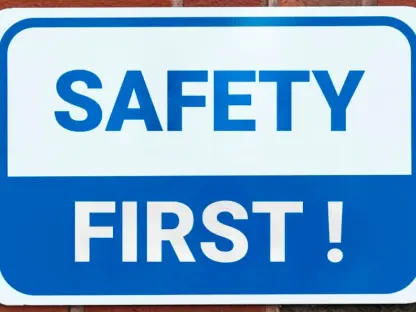In a bustling corporate boardroom, an HR professional unveils a meticulously prepared report on employee engagement, packed with charts and statistics, only to be met with blank stares from the C-suite. The silence is deafening as executives, laser-focused on revenue targets and market share, struggle to see the relevance of the data. This scenario plays out far too often, highlighting a critical challenge: how can HR turn raw numbers into insights that captivate and compel leadership to act? The disconnect between HR’s efforts and executive priorities is a barrier that must be dismantled to unlock the true value of workforce analytics.
Why HR Struggles to Connect with the C-Suite
The gap between HR presentations and executive expectations often stems from a fundamental mismatch in focus. While HR teams dive deep into metrics like turnover rates or satisfaction scores, leadership is preoccupied with bottom-line impacts—think profit margins and competitive positioning. A detailed breakdown of engagement survey results, though insightful to HR, can feel detached from the urgent financial concerns dominating a CEO’s agenda.
This misalignment frequently results in missed opportunities. When presentations fail to translate data into business outcomes, executives may dismiss HR’s contributions as operational rather than strategic. The risk is clear: without a shift in approach, HR’s voice diminishes in high-stakes discussions, relegating critical workforce issues to the sidelines.
The High Stakes of HR Analytics in Today’s Market
In a data-driven corporate landscape, HR analytics hold unprecedented importance for organizational success. Research reveals that companies effectively leveraging people analytics experience a remarkable 25% boost in productivity, underscoring the potential of workforce insights to drive performance. As businesses face tighter competition and razor-thin margins, these insights become indispensable for maintaining an edge.
Yet, the consequence of poor communication looms large. If HR fails to frame data in terms that resonate with leadership—such as cost savings or revenue growth—there’s a real danger of being excluded from strategic planning. This sidelining not only undermines HR’s role but also jeopardizes the company’s ability to address pressing issues like talent retention or skill shortages before they spiral into crises.
Core Strategies for Crafting Insights That Resonate
Turning HR data into executive-friendly insights requires a deliberate shift in approach, starting with tying metrics directly to financial outcomes. Instead of citing a 10% dip in engagement, HR should highlight the associated $2.3 million productivity loss, making the stakes tangible. This reframing answers the critical question of why the data matters to the business’s core objectives.
Simplicity also plays a pivotal role in capturing attention. Presentations should zero in on three elements: identifying the problem, quantifying its cost, and proposing clear solutions. By stripping away jargon and excessive detail, HR can cut through the noise, ensuring every statistic addresses the “so what?” factor that executives instinctively seek.
Beyond numbers, storytelling and visuals elevate impact. A narrative that weaves data into a compelling arc—paired with clean, branded charts featuring legible typography—can transform dry reports into memorable insights. For instance, a live dashboard displaying real-time retention risks often prompts swifter action from leadership compared to static monthly updates, proving that delivery matters as much as content.
Establishing Trust Through Evidence and Relatability
Credibility is the cornerstone of effective HR communication, and grounding insights in authoritative research strengthens the case. A Harvard Business Review study notes that 70% of executives consider people analytics essential, validating the urgency of aligning HR data with business goals. Such evidence reassures leadership that workforce strategies are not just theoretical but rooted in proven value.
Real-world perspectives add another layer of trust. Consider the example of an HR leader who, during a casual hallway conversation, flagged a looming turnover crisis in the sales team, framing it as a direct threat to quarterly targets. This informal yet pointed exchange sparked immediate executive concern, illustrating that timing and context can amplify impact just as much as a formal boardroom pitch.
Actionable Tactics for HR to Drive Executive Decisions
For HR professionals aiming to shift from data reporters to strategic influencers, a practical roadmap is essential. Begin by aligning insights with overarching business goals, such as revenue growth or cost reduction. Framing a skills gap as a barrier to hitting sales targets, for example, positions HR as a driver of critical outcomes rather than a bystander.
Embracing technology is another game-changer. Real-time tools like live dashboards provide up-to-the-minute data on issues like employee attrition, enabling leadership to make informed decisions without delay. This agility contrasts sharply with outdated monthly reports, which often lag behind the pace of business needs.
Finally, preparation for spontaneous discussions and impactful design cannot be overlooked. HR must be ready with concise talking points that link workforce challenges to financial results, even in impromptu settings. Coupled with visuals featuring consistent colors and clear layouts, these efforts ensure key takeaways stand out, guiding executives to action with minimal distraction.
Reflecting on the Path Forward
Looking back, the journey of transforming HR data into executive insights revealed a profound truth: relevance and clarity were the linchpins of influence. Each step, from aligning metrics with financial impacts to harnessing real-time tools, underscored that HR’s value was magnified when communicated through a business lens. The narratives and visuals crafted in those efforts left lasting impressions on leadership.
Moving ahead, HR teams should prioritize building fluency in the language of the C-suite, continuously refining how data is framed to spotlight strategic impact. Investing in dynamic tools and honing skills for both formal and informal exchanges will further cement their role as indispensable partners. By embracing these practices, HR can ensure workforce insights consistently shape the decisions that drive organizational success.









